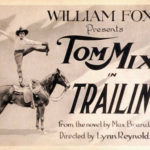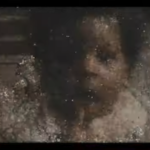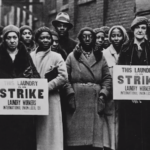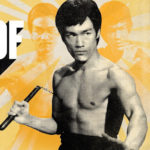Soviet Witness to the Holocaust
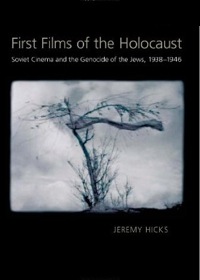 Images of the Nazi atrocities of World War II haunted the second half of the 20th century, and continue to do so, in the 21st.
Images of the Nazi atrocities of World War II haunted the second half of the 20th century, and continue to do so, in the 21st.
But not all the film and photography of those events has been available to historians and the public. Jeremy Hicks set out to expand the visual record of the Holocaust by seeking out Soviet contributions to it. In First Films of the Holocaust: Soviet Cinema and the Genocide of the Jews, 1938–1946 (University of Pittsburgh Press), Hicks, a senior lecturer in Russian at Queen Mary University of London, urges historians to take into account a corpus of film that the West has little heeded: the many, vexed Russian films that, before Western ones, depicted the horrors of Nazi rule yet were suppressed in both the United States and the Soviet Union.
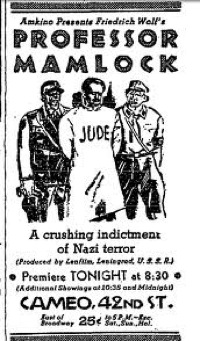
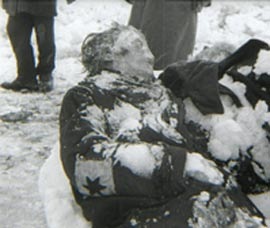
In his introduction, Hicks writes: “By shifting the focus away from the familiar territory of the 1945 U.S. and British newsreels and to that of Soviet newsreels, documentaries, and features, we can better observe how the unprecedented sights of brutality were grasped within established narrative frameworks. For the Soviets, this meant adapting representations of Nazi atrocities so as to convey a ‘Soviet’ version of the Holocaust, to ‘Sovietize’ it, to claim the victims as their own, a process that can be compared to American filmmakers’ later tendency to ‘Americanize’ the same events.”
 Jeremy Hicks
Jeremy Hicks describes his archival search, and finds
Jeremy Hicks
Jeremy Hicks describes his archival search, and finds

n
Some interesting archive issues came up. I began working in the Russian documentary film archive (RGAKFD, Krasnogorsk) in 2000 while researching the films of [Russian pioneer of political documentary and inventor of cinéma vérite] Dziga Vertov [for the book Dziga Vertov: Defining Documentary Film, 2007] and towards the end of that research, around 2005, I began to wonder how the many Soviet films depicting Nazi atrocities related to what we know as the Holocaust and whether they were known and recognised by film historians beyond, or indeed, inside, Russia.
Preliminary readings indicated they were not, and this is where the research grew from.
The challenges of this archive are numerous. Firstly, you need to know Russian to access the full version of the catalogue. Then, while you can search by keyword, the descriptions are incomplete, and are unlikely to make the links you are interested in. Thus, the word ‘Holocaust’ does not exist. You have to search for ‘atrocities’ or other such terms.
The other way in which I searched for materials was simply to take historical sources, published or unpublished, about what had happened and in a given place at a given time, and then to look for films of that place. In this way, searching for and calling up films made of the liberation of towns in which I knew the Nazis had murdered Jews, I was able to find a substantial number of rare or previously unseen images of the Holocaust in the former Soviet Union.
The images I discovered don’t change the historical record, but they enable our perception of it to be shifted. Our view of the Holocaust tends to focus on Poland, the ghettos in Poland, and the extermination camps situated there, and Auschwitz in particular. The killing of over 1.5 million Soviet Jews, the first victims of the systematic killings, has tended not to figure so large in our conceptualisations of the Holocaust.
Partly this is because more people were killed in death camps than by the mobile killing squads, who mostly shot their victims. Partly, it is because this was the Soviet Union and it was not popular to picture the Soviets as victims during the Cold War. Finally though, there was a lack of images with which to convey this story. I hope that finding images which depict the way in which Soviet Jews were made to wear armbands, often herded into ghettos, and then shot, can enable us to accord this important part of the Holocaust its rightful importance.
At the time the Soviets took images of Nazi atrocities to galvanise their own population to resist, showing what might happen to the audience if the Nazis took over. Likewise, where it already had happened, the newsreels called for revenge. Alongside this dimension, and increasing as the war continued was the need to document war crimes for a possible war crimes tribunal. The images specifically of Jews were taken really because there were so many Jewish victims. These were often edited out of the final newsreels, but extraordinarily, in Krasnogorsk they retain the outtakes of these newsreels, that enable us to use the Soviet images, but tell a story rather different than that the Soviets wanted to convey.
The films all came on 35mm prints to be viewed on a Steenbeck [flatbed film editing suite usable with both 16mm and 35mm film], and the archive is more oriented towards people viewing films as a prelude to purchasing footage for documentary films, than for those writing books about such images. The RGAKFD staff were nevertheless always very helpful to me, and ultimately I found it a great place to work.
The paper archives such as The Russian State Archive of Literature and Art (RGALI) in Moscow also contained many treasures, such as unpublished variants of treatments, and correspondence between the cameramen and the studios. These latter materials were sometimes fascinating, especially those of the cameramen at the Auschwitz camp and their overseers in Moscow. Uncovering this was one of the most exciting moments, because much has been said as to the untrustworthiness and staged qualities of the Soviet footage of Auschwitz. The correspondence I uncovered demonstrated the sometimes circumstantial reasons why the footage turned out as it did.
The Auschwitz correspondence illustrates that the cameramen arrived in early February, about a week after the camp was liberated, whereas it is often claimed that they arrived a lot later and reconstructed everything.
They did reconstruct, but the correspondence suggests that this was in part because they had to order lighting apparatus with which to film interiors, and so had to reconstruct the scenes inside the barracks some time later.
The absence of sound interviews is also a flaw in the footage, but the correspondence reveals that the Soviet newsreel men ordered a sound recording van, but it was too far away: and this entirely circumstantial reason explains the absence of interviews with the survivors.
More comments from Jeremy Hicks are online. He discusses WWII films documenting Nazi atrocities towards Soviet Jews that lay hidden in Russian State Archives for more than 60 years. The clips and out takes are, he believes, the first cinematic representation of the mass extermination of the Jews.
Previous Post: New Books, and Lots of Them

